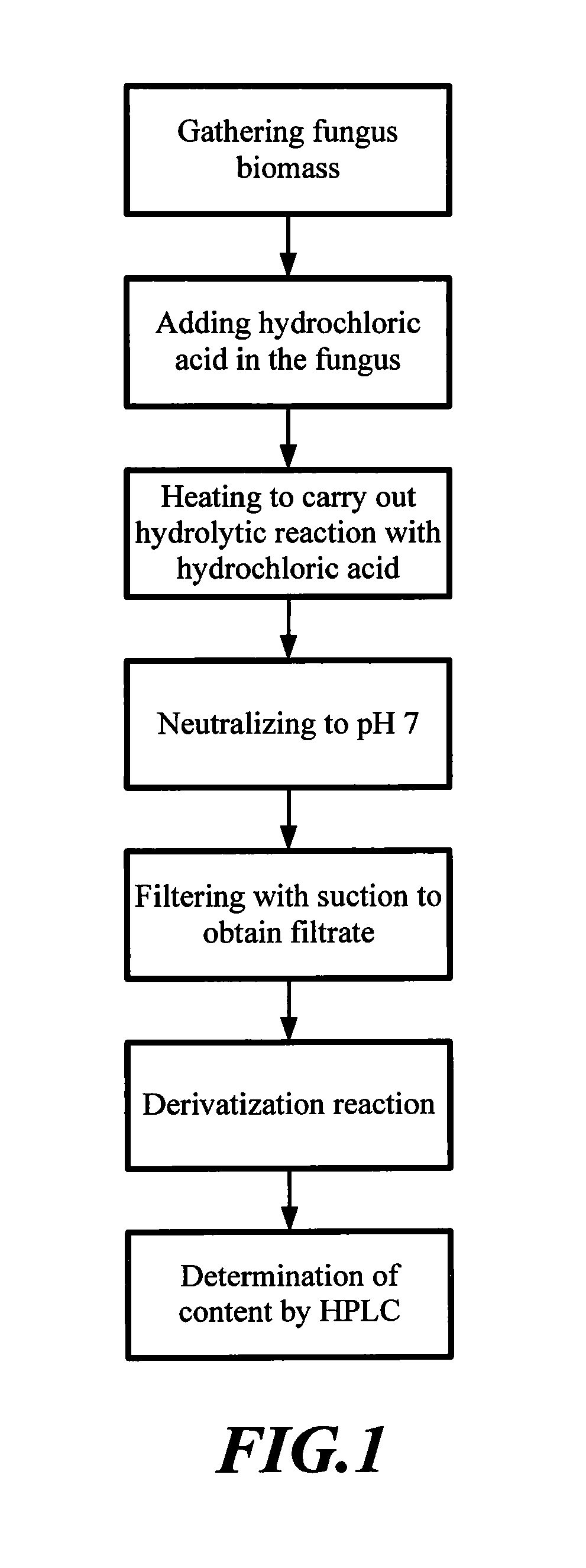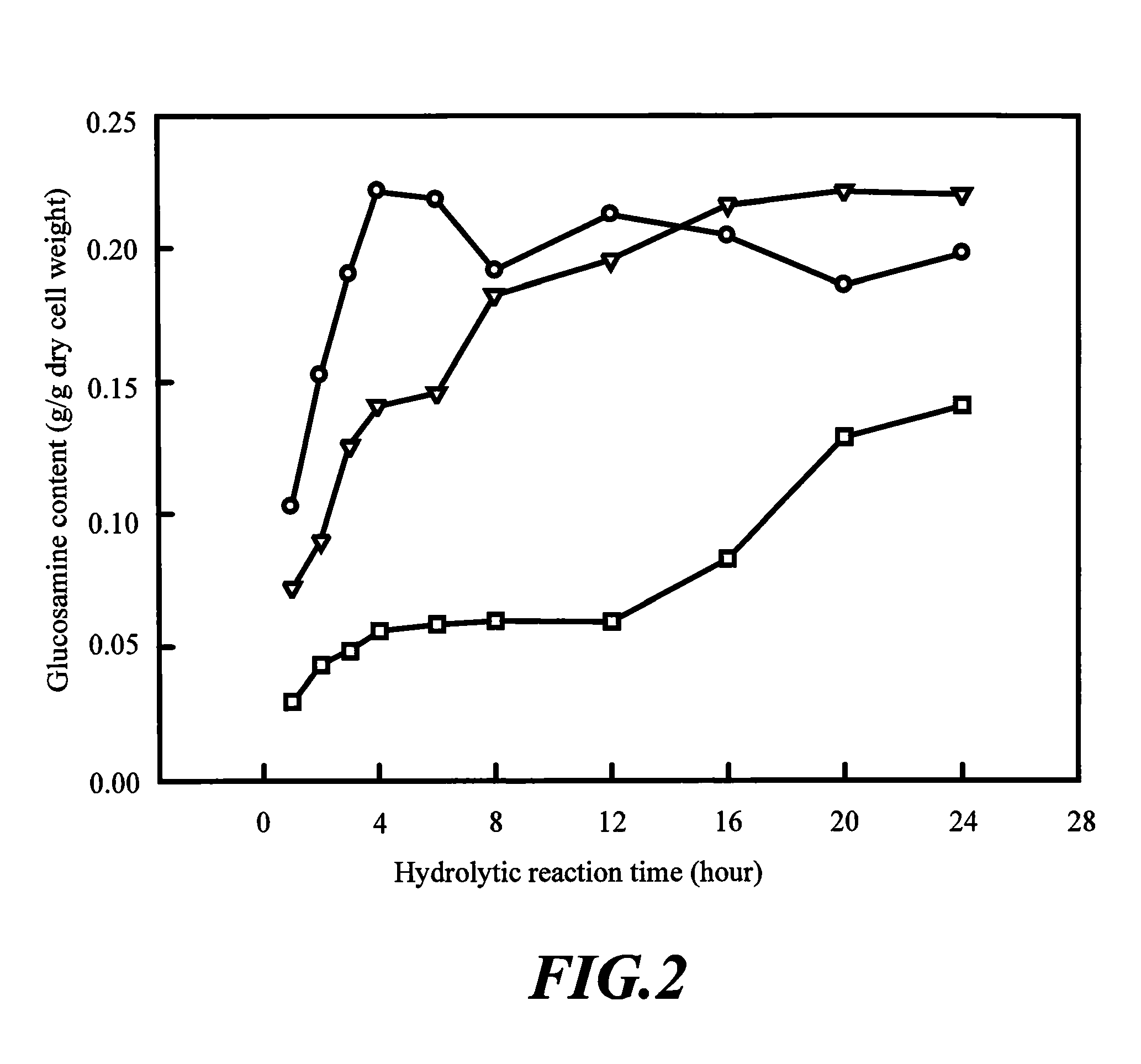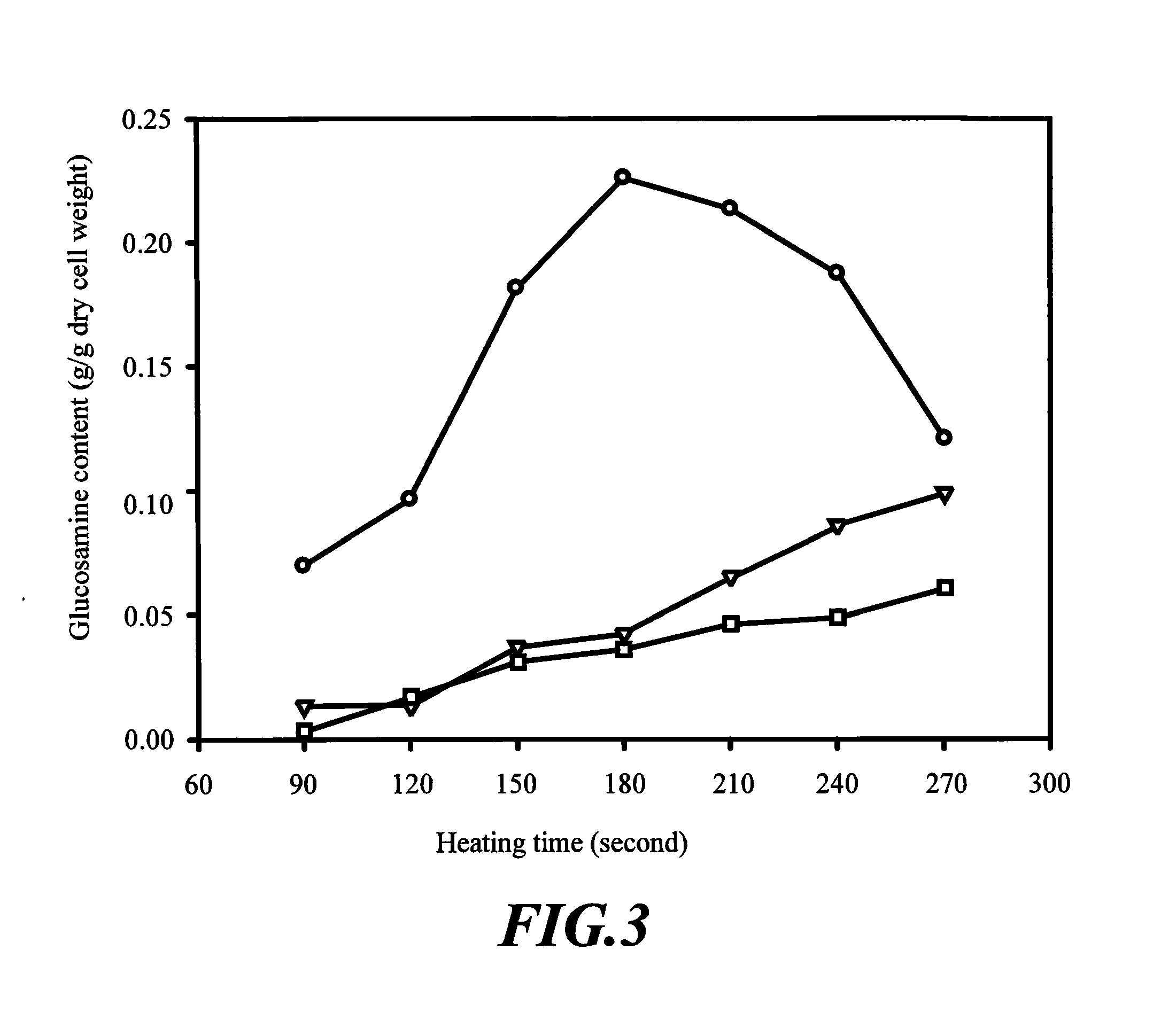Process for producing glucosamine and acetyl glucosamine by microwave technique
- Summary
- Abstract
- Description
- Claims
- Application Information
AI Technical Summary
Benefits of technology
Problems solved by technology
Method used
Image
Examples
example 1
Preparation of Chitin or Chitosan Source
[0031]This example cultivates massively a chitin- or chitosan-producing fungus in shaking flask fermentation fashion, uses this fungus as the source of chitin or chitosan, breaks fungal cell, isolates chitin or chitosan, and finally, carries out hydrolytic reaction with hydrochloric acid to obtain glucosamine or acetyl glucosamine product.
1.1 Test Strain
[0032]This example uses Aspergillus flavus, Aspergillus sp. BCRC31742 as the strain for producing fungal biomass. Said strain had been purchased from Food Industry Research And Development Institute (Hsinchu, Taiwan).
1.2 Cultivation by Shaking Flask Fermentation
[0033]Aspergillus flavus strain Aspergillus sp. BCRC31742 was cultured in a PDA solid medium (Potato Dextrose Agar: 200 g / L Diced potatoes, 20 g / L Glucose, 15 g / L Agar) at 30° C. to be activated for 7 days. Then, a single colony was inoculated in a sterilized PDB liquid medium (Potato Dextrose Broth: 20 g / L Diced potatoes, 4 g / L Glucose,...
example 2
Hydrolytic Reaction Test with Hydrochloric Acid
[0034]Hydrolytic reaction test with hydrochloric acid was carried out in accordance with the flow scheme as described as in FIG. 1. Fungal biomass prepared in Example 1 was used as a chitin or chitosan source. After adding hydrochloric acid thereinto, hydrolytic reactions were carried out under various reaction conditions to obtain glucosamine or acetyl glucosamine product. Then, 1-naphthyl isothiocyanate pyridine (1-NITC) solution was added therein to perform derivatization reaction. The content of glucosamine was then determined by High Performance Liquid Chromatography (HPLC).
2.1 Test with Conventional Oven as the Heat Source
[0035]Each sample used 10 ml homogenized fungal cell solution as test material and to which, 10 ml each of various concentrations of 2N, 4N, and 6N hydrochloric acid (HCl) solution was added, respectively, mixed well and placed in a conventional oven at 100° C. for reacting by heating for 1, 2, 3, 4, 6, 8, 12, 16...
PUM
| Property | Measurement | Unit |
|---|---|---|
| Time | aaaaa | aaaaa |
| Time | aaaaa | aaaaa |
| Force | aaaaa | aaaaa |
Abstract
Description
Claims
Application Information
 Login to View More
Login to View More - R&D
- Intellectual Property
- Life Sciences
- Materials
- Tech Scout
- Unparalleled Data Quality
- Higher Quality Content
- 60% Fewer Hallucinations
Browse by: Latest US Patents, China's latest patents, Technical Efficacy Thesaurus, Application Domain, Technology Topic, Popular Technical Reports.
© 2025 PatSnap. All rights reserved.Legal|Privacy policy|Modern Slavery Act Transparency Statement|Sitemap|About US| Contact US: help@patsnap.com



